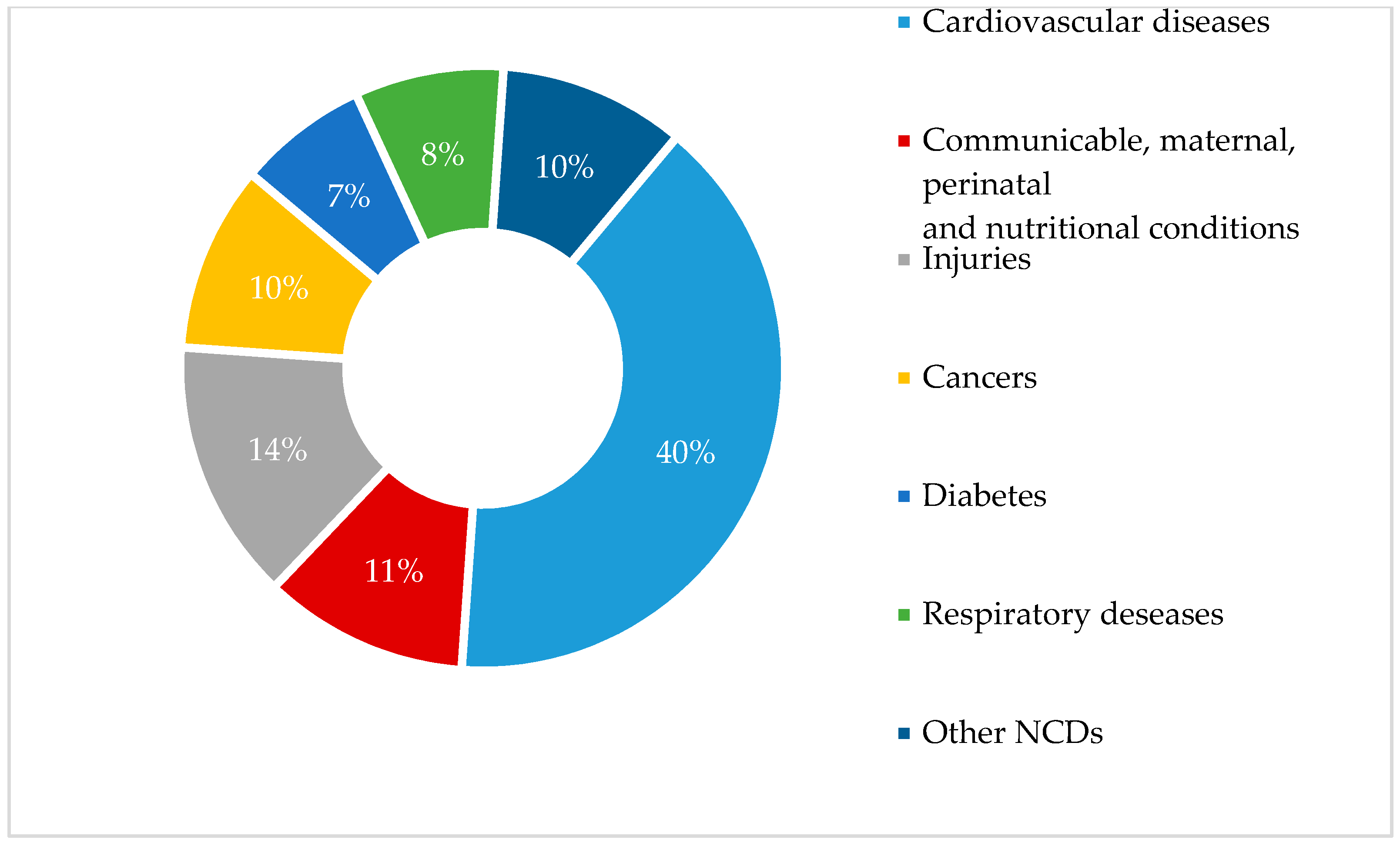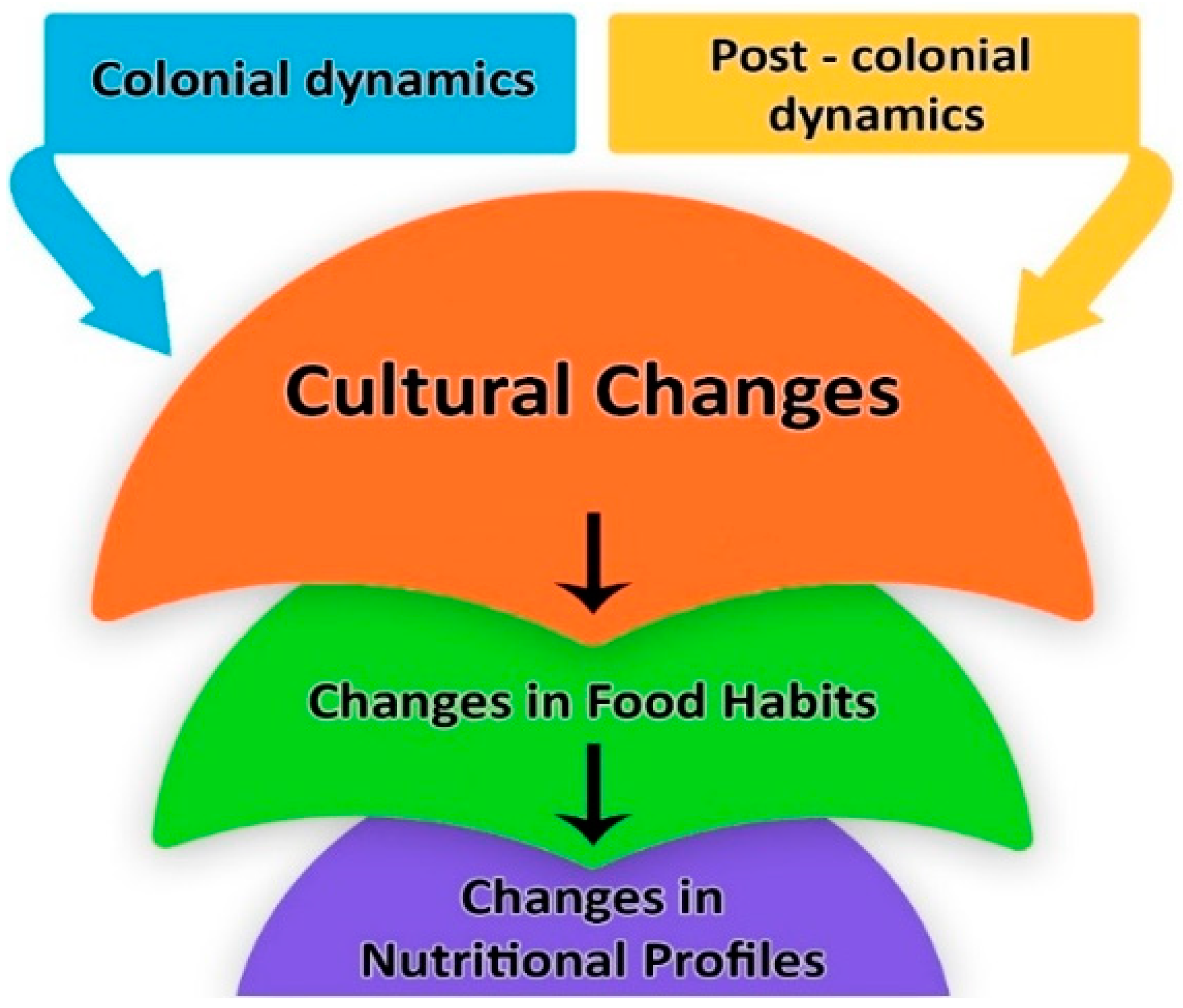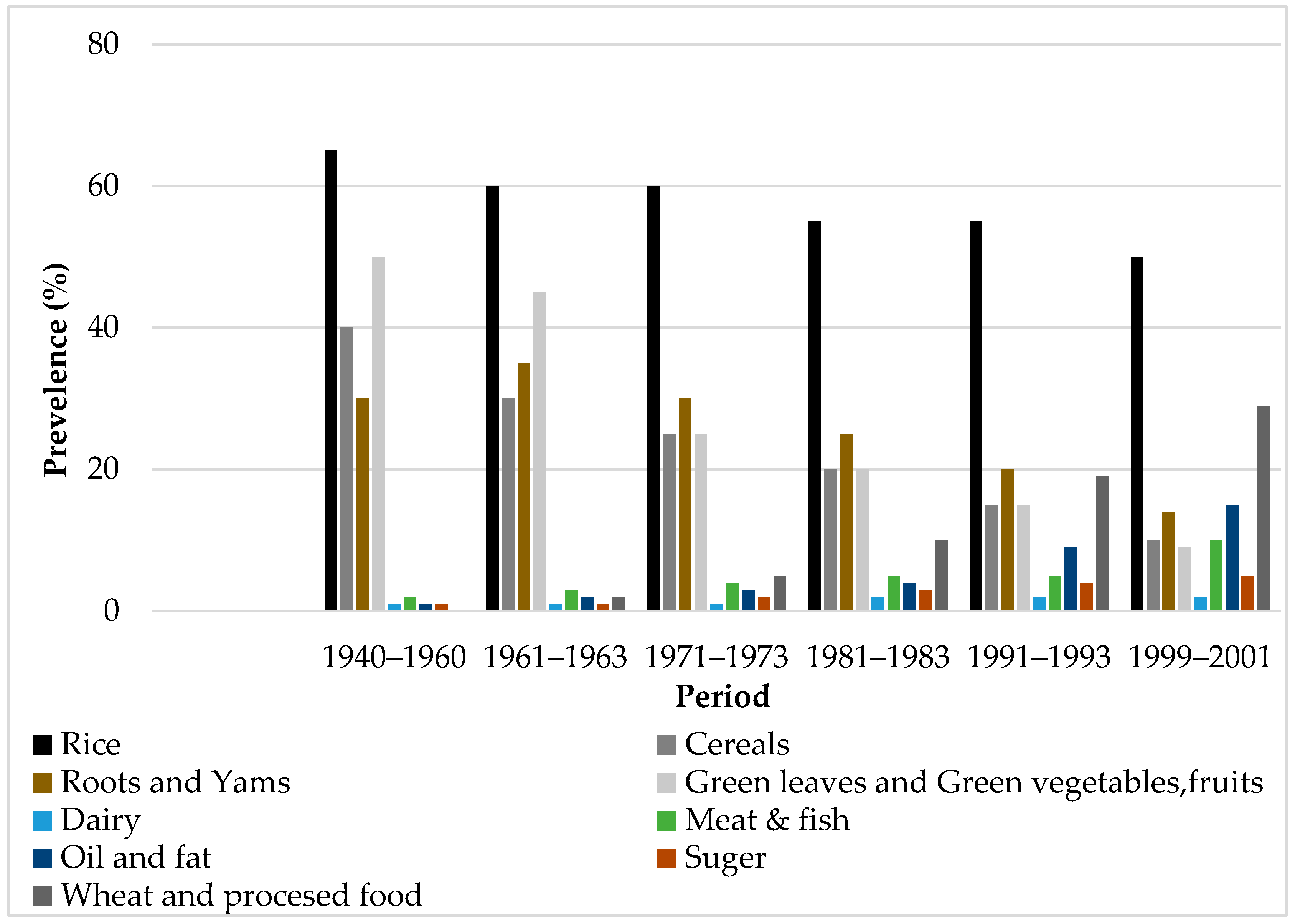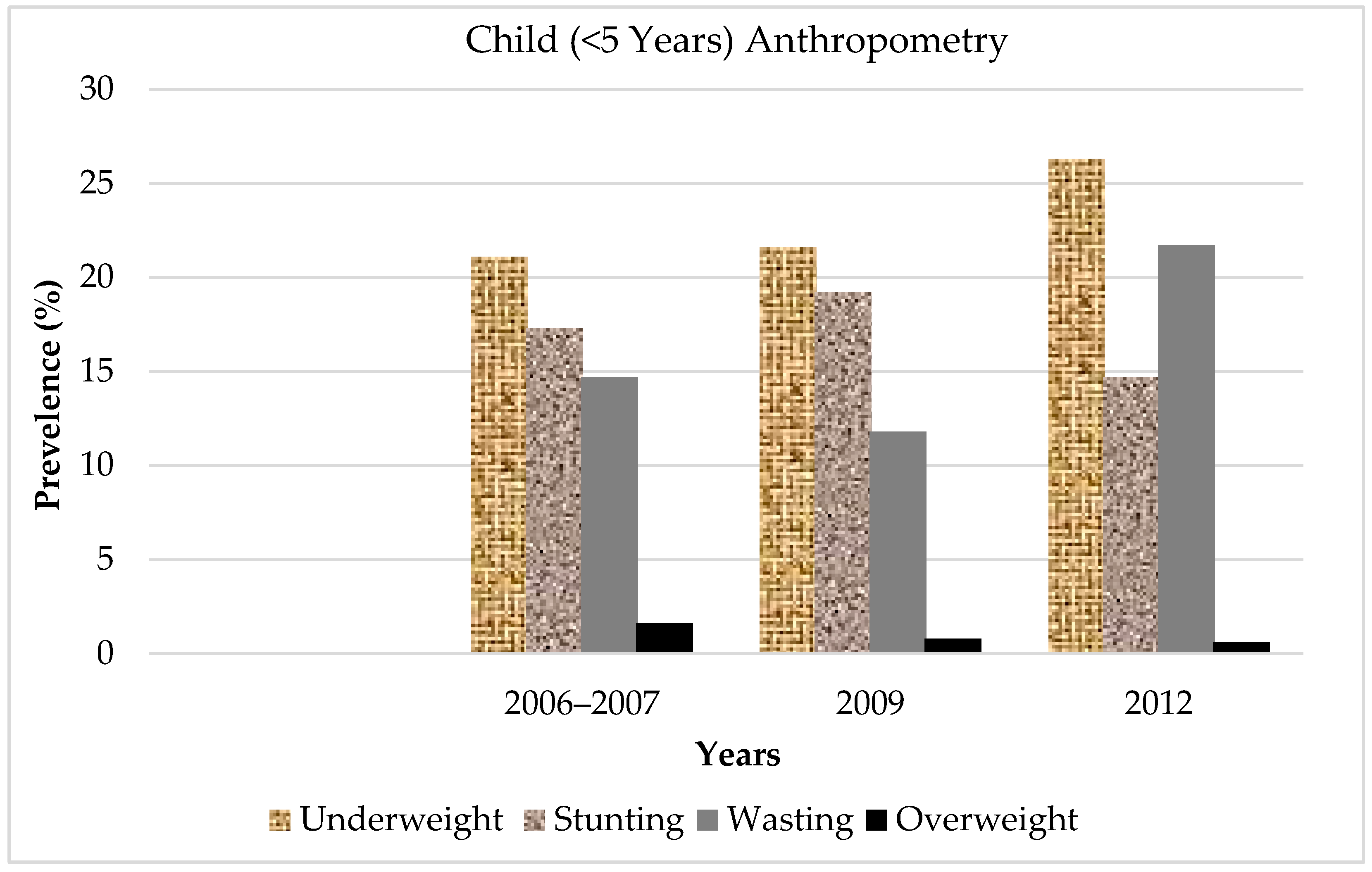Nutrition Transition and Traditional Food Cultural Changes in Sri Lanka during Colonization and Post-Colonization
Abstract
:1. Introduction
2. Theoretical Framework
3. Materials and Methods
4. Results
4.1. Ancient and Traditional Food Habits and Food Culture in Sri Lanka
4.2. Nutrition Transition after Colonization
5. Discussion
5.1. Destruction of the Traditional Farming Systems
5.2. Disparities of Socioeconomic Status and Development of the Government Policy
5.3. Creation of Cash-Crop Economies
5.4. Ecological Destruction
5.5. Nutrition-Related Propaganda (i.e., Advertising)
5.6. Disruption of the Family Unit
6. Conclusions
Author Contributions
Funding
Acknowledgments
Conflicts of Interest
References
- Food and Agriculture Organization. The State of Food Insecurity in the World; Food and Agriculture Organization of the United Nations: Rome, Italy, 2015. [Google Scholar]
- Food and Agriculture Organization of the United Nations. The State of Food Security and Nutrition in the World 2017. In Building Resilience for Peace and Food Security; FAO: Rome, Italy, 2017. [Google Scholar]
- Koplan, J.P.; Liverman, C.T.; Kraak, V.I. Preventing Childhood Obesity: Health in the Balance, Institute of Medicine (US) Committee on Prevention of Obesity in Children and Youth; National Academies Press: Washington, DC, USA, 2005. [Google Scholar]
- World Health Organization. The World Health Report: Today’s Challenges; WHO: Geneva, Switzerland, 2003; pp. 1–22. [Google Scholar]
- World Health Organization. Globalization, Diets and Non-Communicable Diseases; World Health Organization: Geneva, Switzerland, 2002; ISBN 9241590416. [Google Scholar]
- Pannilage, U. Globalization and Construction of Local Culture in Rural Sri Lanka. Soc. Study 2016, 6, 448–461. [Google Scholar]
- Pingali, P. Westernization of Asian diets and the transformation of food systems: Implications for research and policy. Food Policy 2007, 32, 281–298. [Google Scholar] [CrossRef]
- Perera, A.N.F. Sri Lankan Traditional Food Cultures, and Food Security, Economic Review; Department of Animal Science, Faculty of Agriculture, University of Peradeniya: Kandy, Sri Lanka, 2008; pp. 40–43. [Google Scholar]
- Regmi, A.; Dyck, J. Effects of Urbanization on Global Food Demand. Changing Structure of Global Food Consumption and Trade. 2001. Available online: http://citeseerx.ist.psu.edu/viewdoc/download?doi=10.1.1.738.5776&rep=rep1&type=pdf (accessed on 11 July 2018).
- Holmboe-Ottesen, G.; Wandel, M. Changes in dietary habits after migration and consequences for health: A focus on South Asians in Europe. Food Nutr. Res. 2012, 56, 18891. [Google Scholar] [CrossRef] [PubMed]
- Perera, N. Society, and Space: Colonialism, Nationalism, and Postcolonial Identity in Sri Lanka (Transitions: Asia and Asian America); Westview Press: Colombo, Sri Lanka, 1998; ISBN 978-0813329796. [Google Scholar]
- Bill, A.; Griffiths, G.; Tiffin, H. Post-Colonial Studies, the Key Concepts, 2nd ed.; Routledge: New York, NY, USA, 2007; pp. 1–227. ISBN 0-203-93347. [Google Scholar]
- Sawant, D.G. Perspectives on Postcolonial Theory: Said, Spivak and Bhabha; TACS College: Sengaon, India, 2011; Available online: https://www.researchgate.net/publication/271633479 (accessed on 12 December 2017).
- Popkin, B.M. The nutrition transition and its health implications in lower-income countries. Public Health Nutr. 1998, 1, 5–21. [Google Scholar] [CrossRef] [PubMed] [Green Version]
- Goodland, R. The Westernization of Diets: The Assessment of Impacts in Developing Countries; World Bank: Washington, DC, USA, 2001. [Google Scholar]
- Popkin, B.M. Nutritional Patterns and Transitions, Population and Development Review. Available online: https://www.jstor.org/stable/2938388?seq=1#page_scan_tab_contents (accessed on 6 April 2018).
- World Health Organization. Non-Communicable Diseases Country Profiles-2014. Available online: http://www.who.int/nmh/countries/en/ (accessed on 9 March 2018).
- Damman, S.; Eide, W.B.; Kuhnlein, H.V. Indigenous peoples’ nutrition transition in a right to food perspective. Food Policy 2008, 33, 135–155. [Google Scholar] [CrossRef]
- Senanayake, S.G. Indigenous knowledge as a key to sustainable development. J. Agric. Sci. 2006, 2, 87–94. [Google Scholar] [CrossRef]
- Turner, N.J.; Turner, K.L. “Where our women used to get the food”: Cumulative effects and loss of ethnobotanical knowledge and practice; case study from coastal British Columbia. Botany 2008, 86, 103–115. [Google Scholar] [CrossRef]
- Shafiqul Huque, A. The impact of colonialism: Thoughts on politics and governance in Bangladesh. Asian Aff. 1997, 28, 15–27. [Google Scholar] [CrossRef]
- Dietler, M. Culinary encounters: Food, identity, and colonialism. In The Archaeology of Food and Identity; Twiss, K., Ed.; Center for Archaeological Investigations, Press University of Southern Illinois: Carbondale, IL, USA, 2007; pp. 218–242. [Google Scholar]
- Withanachchi, C.R.; Mendis, D.T. Settlement Archaeology in Middle Yan Oya Basin; Research and Publication Fund; Rajarata University of Sri Lanka: Mihintale, Sri Lanka, 2017. [Google Scholar]
- Raschke, V.; Cheema, B. Colonisation the New World Order and the eradication of traditional food habits in East Africa: Historical perspective on the nutrition transition. Public Health Nutr. 2008, 11, 662–674. [Google Scholar] [CrossRef] [PubMed]
- Gosden, C. Archaeology and Colonialism: Cultural Contact from 5000 BC to the Present; Cambridge University Press: Cambridge, UK, 2004. [Google Scholar]
- Okazaki, S.; David, E.J.R.; Abelmann, N. Colonialism and Psychology of Culture. Soc. Personal. Psychol. Compass 2008, 2, 90–106. [Google Scholar] [CrossRef]
- Punchihewa, A.G. Cultural transformation in Sri Lanka and its impact on the regional cultural landscape. Soc. Aff. 2015, 1, 13–27. [Google Scholar]
- Lipoeto, N.I.; Lin, K.G.; Angeles, I. Food consumption patterns and nutrition transition in South-East Asia. Public Health Nutr. 2012, 16, 1637–1643. [Google Scholar] [CrossRef] [PubMed] [Green Version]
- Dugian, P.; Gann, L.; Turner, V. Colonialism in Africa 1870–1960; Cambridge University Press: Cambridge, UK, 1972; p. 625. [Google Scholar]
- Cannon, G. Why the Bush administration and the global sugar industry are determined to demolish the 2004 WHO global strategy on diet, physical activity and health. Public Health Nutr. 2004, 7, 369–380. [Google Scholar] [CrossRef] [PubMed]
- Fieldhouse, D.K. Colonialism 1870–1945; Macmillan Education: London, UK, 1983; pp. 1–50. [Google Scholar]
- Hechter, M. Internal Colonialism: The Celtic Fringe in British National Development; Transaction Publishers: Piscataway, NJ, USA, 1995. [Google Scholar]
- Nielsen, M.O.; Robyn, L. Colonialism and criminal justice for Indigenous peoples in Australia, Canada, New Zealand and the United States of America. Indig. Nations J. 2003, 4, 29–45. [Google Scholar]
- Adams, W.M.; Mulligan, M. Nature and the colonial mind. In Decolonizing Nature: Strategies for Conservation in a Post-Colonial Era; Earthscan Publication Limited: London, UK, 2003; pp. 16–50. [Google Scholar]
- Ohnuki-Tierney, E. Culture through Time: Anthropological Approaches; Stanford University Press: Palo Alto, CA, USA, 1990. [Google Scholar]
- Guerrero, M.J. “Patriarchal colonialism” and Indigenise: Implications for Native Feminist spirituality and Native womanism. Hypatia 2003, 18, 58–69. [Google Scholar]
- Colonialism. Available online: https://en.wikipedia.org/wiki/Colonialism (accessed on 12 July 2018).
- Veracini, L. Settler Colonialism; Palgrave Macmillan: Basingstoke, UK, 2010. [Google Scholar]
- Mukherjee, A.P. Whose post—Colonialism and whose postmodernism? J. Postcolonial Writ. 1990, 30, 1–9. [Google Scholar] [CrossRef]
- Irani, L.C.; Dourish, P. Postcolonial interculturality. In Proceedings of the 2009 international workshop on Intercultural Collaboration, Palo Alto, CA, USA, 20–21 February 2009; pp. 249–252. [Google Scholar]
- Ziai, A. Postcolonial Perspectives on ‘Development’; ZEF Working Paper Series; Center for Developing Research, Universitiy of Bonn: Bonn, Germany, 2012. [Google Scholar]
- Janesick, V.J. Oral History for the Qualitative Researcher: Choreographing the Story; Guilford Press: New York, NY, USA, 2010. [Google Scholar]
- Leavy, P. Oral History: Understanding Qualitative Research; Oxford University Press: Oxford, UK, 2011. [Google Scholar]
- Ritchie, D.A. Doing Oral History; Oxford University Press: Oxford, UK, 2014. [Google Scholar]
- Thompson, P. The Voice of the Past: Oral History; Oxford University Press: Oxford, UK, 2017. [Google Scholar]
- Berg, B.L. Methods for the social sciences. In Qualitative Research Methods for the Social Sciences; Pearson Education: Boston, MA, USA, 2004. [Google Scholar]
- Weerasekara, W.A.P.C. Impact on Policy Responses to Food Price Crisis and Rural Food Security in Sri Lanka. Future Food 2013, 1, 79–92. [Google Scholar]
- Siriweera, W.I. A Study of the Economic History of Pre-Modern Sri Lanka; Vikash Publishing House: New Delhi, India, 1994. [Google Scholar]
- Maddumabandara, C.M. Catchment Ecosystems and Village Tank Cascades in the Dry Zone of Sri Lanka a Time-Tested System of Land and Water Resource Management; Springer: Dordrecht, The Netherland, 1985; pp. 99–113. [Google Scholar]
- Upawansa, K.G. Paarasarika Hela Govithena; COMPA Endogenous Development; Nethmi Tele Center: Peradeniya, Sri Lanka, 2005. [Google Scholar]
- Knox, R. An Historical Relation of the Island Ceylon in the East Indiers; K.V.G. de Silva and Sons (Co.) Ltd.: Colombo, Sri Lanka, 1983. [Google Scholar]
- Tennent, J.E. Ceylon: An Account of the Island; Longman: London, UK, 1860. [Google Scholar]
- Winterbottom, A. Producing and using the historical relation of Ceylon: Robert Knox, the East India Company and the Royal Society. Br. J. Hist. Sci. 2009, 42, 515–538. [Google Scholar] [CrossRef]
- Withanachchi, S.S.; Köpke, S.; Withanachchi, C.R.; Pathiranage, R.; Ploeger, A. Water resource management in dry zonal paddy cultivation in Mahaweli River Basin, Sri Lanka: An analysis of spatial and temporal climate change impacts and traditional knowledge. Climate 2014, 2, 329–354. [Google Scholar] [CrossRef]
- Ratnasinghe, A. Chena Cultivation: Most Primitive Type of Agriculture. Daily News, 27 August 2002. [Google Scholar]
- Deraniyagala, S.U. Pre-History of Sri Lanka, an Ecological Perspective; Department of Archaeological Survey, Government of Sri Lanka: Colombo, Sri Lanka, 1992; pp. 20–156.
- Rajapaksha, U. Traditional Food Plants in Sri Lanka; Hector Kobbekaduwa Agrarian Research and Training Institute: Colombo, Sri Lanka, 1998. [Google Scholar]
- Jayaweera, D.M. Medicinal Plants (Indigenous and Exotic) Used in Ceylon: Flacourtiaceae-Lythraceae; National Science Council of Sri Lanka: Colombo, Sri Lanka, 1981; p. 77. [Google Scholar]
- De Fonseka, R.N.; Vinasithamby, S. A Provisional Index to the Local Names of the Flowering Plants of Ceylon; Department of Botany, University of Ceylon: Colombo, Sri Lanka, 1971. [Google Scholar]
- Department of Ayurveda. Ayurveda Pharmacopoeia; Department of Ayurveda, Ayurveda Education Bureau: Colombo, Sri Lanka, 1985; Volume 1, p. 3.
- Department of Ayurveda. Osuturu Visituru; Department of Ayurveda, Ayurveda Education Bureau: Colombo, Sri Lanka, 1994; Volumes 1–4.
- Fernando, S. Herbal Food and Medicine in Sri Lanka; Navrang: New Delhi, India, 1993. [Google Scholar]
- Bandaranayake, W.M.; Sultanbawa, M.U.; Weerasekara, S.C.; Balasubramaniam, S. Glossary of Sinhala and Tamil Names of the Plants of Sri Lanka; Ceylon Forester, Ceylon Forest Department: Colombo, Sri Lanka, 1974; Volume xi. [Google Scholar]
- That Which Lingers: The Cultural Influence of Dutch Colonists. April 2014. Available online: http://www.serendib.btoptions.lk/article.php?issue=52&id=1339 (accessed on 8 November 2017).
- Peiris, G.H. Agrarian Transformations in British Sri Lanka. In Sri Lanka Journal of Agrarian Studies; Hector Kobbekaduwa Agrarian Research and Training Institute: Colombo, Sri Lanka, 1981; Volume 2, pp. 1–26. [Google Scholar]
- Silva, K.M. A History of Sri Lanka; C Hurst & Co Publishers Ltd.: London, UK, 1981; ISBN 978-090583850. [Google Scholar]
- Balasubramanian, A.V.; Nirmala Devi, T.D. Traditional knowledge systems of India and Sri Lanka. In Proceedings of the COMPAS Asian Regional Workshop on Traditional Knowledge Systems and their Current Relevance and Applications, Bangalore, India, 3–5 July 2006; Centre for Indian Knowledge Systems: Bangalore, India, 2006. [Google Scholar]
- Geiger, W. The Mahavamsa: The Great Chronicle of Ceylon; Frowde, H., Ed.; Oxford University Press: London, UK, 1908; Volume 63. [Google Scholar]
- Central Bank of Sri Lanka. Annual Reports 1950–2001; Central Bank: Colombo, Sri Lanka, 1950–2001. Available online: https://www.cbsl.gov.lk (accessed on 9 April 2017).
- Patabandige, G.M.J.; Yapa, S.T.W.S. Consumer Satisfaction of Multinational Fast Food Outlets with the Service Quality and Other Influencing Factors in the Western province of Sri Lanka. Available online: https://www.researchgate.net/publication/312091652_CONSUMER_SATISFACTION_OF_MULTINATIONAL_FAST_FOOD_OUTLETS_WITH_THE_SERVICE_QUALITY_AND_OTHER_INFLUENCING_FACTORS_IN_THE_WESTERN_PROVINCE_OF_SRI_LANKA (accessed on 9 November 2017).
- World Bank Organization. What Causes Undernutrition in Sri Lanka, Nutrional Status and Children. Available online: http://siteresources.worldbank.org/SRILANKAEXTN/Resources/233046-1222978473355/ch3LKNutritionOct2008-2.pdf (accessed on 5 October 2017).
- World Health Organization. Nutrition Landscape Information System, Country Profile: Sri Lanka. 2016. Available online: http://apps.who.int/nutrition/landscape/report.aspx?iso=lka (accessed on 9 November 2017).
- Liyanage, K.D.C.E. Nutrition Security in Sri Lanka. Procedia Food Sci. 2016, 6, 40–46. [Google Scholar] [CrossRef]
- Munasinghe, I. Socio-Economics of Colonial Contribution to Railways in Sri Lanka (1845–1905); Author Publisher: Maharagama, Sri Lanka, 2015; ISBN 9789555361880. [Google Scholar]
- Wickramasinghe, D.A.; Cameron, D.C. British Capital, Ceylonese Land, and Indian Labour: The Imperialism and Colonialism of Evolution of Tea Plantations in Sri Lanka; University of Sri Jayewardenepura: Colombo, Sri Lanka; University of Queensland Australia: Brisbane, QLD, Australia, 2004. [Google Scholar]
- Knott, J.E.; Deanon, J.R. Vegetable Production in Southeast Asia. In Vegetable Production in Southeast Asia; University Philippines Press: Los baños, Philippines, 1967; p. 366. [Google Scholar]
- Von Braun, J.; Kennedy, E. Commercialization of Subsistence Agriculture: Income and Nutritional Effects in Developing Countries; International Food Policy Research Institute: Washington, DC, USA, 1986. [Google Scholar]
- Popkin, B.M. An overview of the nutrition transition and its health implications: The Bellagio meeting. Public Health Nutr. 2002, 5, 93–103. [Google Scholar] [PubMed]
- Reardon, T.; Timmer, C.P.; Barrett, C.B.; Berdegue, J. The rise of supermarkets in Africa, Asia, and Latin America. Am. J. Agric. Econ. 2003, 85, 1140–1146. [Google Scholar] [CrossRef]
- Thathvasuthan, A.; Chandrasekara, A.; Wijesinghe, D.G.N.G.; Jayawardena, H.M.D.K. The Effect of Type of Cereal on the Glycaemic Response of Two Traditional Sri Lankan Food Items. Trop. Agric. Res. 2007, 19, 101–109. [Google Scholar]




| Period | Dynamics |
|---|---|
| Colonial | Policy and practice of power/control over weaker peoples or areas [31] |
| The system or policy of a nation seeking to extend or retain its authority over other people or territories [32] | |
| Contributions to colonial aspirations of power and control over the territory; the government response was to impose environmental and social control [33] | |
| Cultural superiority [34] | |
| Colonial powers into the culture [35] | |
| Control by one power over dependent areas or peoples [36,37] | |
| Invest their identity to the colony [38] | |
| The colonizers are convinced of their greatness and their ordained mandate to rule [39] | |
| Postcolonial | Postcolonialism represents an ideological response to colonialist thought [40] |
| Moving toward the development of a more cross-culturally oriented system [41] | |
| Dealing with previously colonized societies [41] |
| Vernacular Name | Botanical Name | Food Use | Nutritional and Therapeutic Value | Edible Parts |
|---|---|---|---|---|
| Katu-attha/Weli-attha (Annona) | Annona muricate/Annona reticulata | Ripened fruits was eaten fresh | Leaf infusion used as sudorific; antispasmodic; emetic flowers are antispasmodic. The ripened fruit is antiscorbutic; the unripe fruit was used for dysentery. Fresh leaves were used as topicals, applied to the stomach of children suffering from indigestion | Fruit |
| Thal Palmyra Palm | Borassus flabellifer L. | The inflorescence is tapped for toddy, vinegar, and jaggery. Young nut water (liquid endosperm) was drunk. | Ripened fruit is rich in vitamins A and C. The toddy is beneficial for inflammatory ailments and dropsy. It is a diuretic prescribed for chronic gonorrhoea and amoebiasis. | Fruit and germinating seed root |
| Divul (Wood Apple) | Feronia limonia L. | Mature and ripe fruit was eaten fresh and drunk | The pulp of the unripe fruit along with other ingredients were used for chronic diarrhea and dysentery. The ripe fruit was useful in hiccups and ailments of the gums and throat and was applied externally on bites of venomous insects. | Fruit |
| Bel fruit (Slime Apple) | Aegle marmelos (L.) Corrêa | Ripened fruits were eaten fresh. The shell and flowers drunk were as a beverage. | This fruit used for fever, hypochondria, melancholia, palpitation of the heart, diarrhea, and gastric troubles in children. The leaves were given for jaundice and anasarca. | Fruit and flower |
| Food Varieties | Vernacular Name | Botanical Name | Nutritional Value |
|---|---|---|---|
| Yams | Raja ala (Greater yam) | Dioscorea alata | Moisture 76 g, Energy 87 kcal, Protein 1.9 g, Fats 0.2 g, Carbohydrates 20 g, Calcium 38 mg, Iron 1.9 mg |
| Green leaves | Heen-gotukola | Centella asiatica | Moisture 84.5 g, Energy 37 kcal, Proteins 2.1 g, Fats 0.5g, Carbohydrates 6.0 g, Calcium 224 mg, Phosphorus 32 mg, Iron 68.8 mg |
| Pethi-thora (Fetid cassia) | Cassia tora | Moisture 85.7 g, Energy 45.0 kcal, Protein 4.0, Fat 0.5 g, Carbohydrates 6.1 g, Calcium 397.0 mg, Iron 83.0 mg, Carotene 25.0 meg, Vitamin C 99.0 mg | |
| Heen sarana (Horse purslane) | Trianthema portulacastrum | Moisture 93.4 g, Energy 21.0 kcal, Protein 2.1 g, Fat 0.3 g, Carbohydrate 2.3 g calcium 50 mg, Phosphorus 28 mg, Iron 2.4 mg, Vitamin A 495 mg | |
| Iramusu | Hemidesmus indicus | Moisture 92.1 g, Energy 26 kcal, Proteins 2 g, Fats 0.7g, carbohydrates 2.9 g, Calcium 73 mg, Phosphorus 21 mg, Fe 10.9 mg, Carotene 5.586 mg | |
| Kathuru-murunga | Sesbania grandiflora | Moisture 73.1 g, Energy 93 kcal, Proteins 8.4 g, Fats 1.4 g, Carbohydrates 11.8 g, Calcium 1130 mg, Phosphrus 80 mg, Iron 3.9 mg, Carotene 5400 meg, Vitamin C 169 mg | |
| Cereal | Undu (Black gram) | Phaseolus mungo | Moisture 10.9 g, Energy 347 kcal, Proteins 24 g, Fats 1.4 g, Carbohydrates 59.6 g, Calcium 154 mg, Phosphrus 385 mg, Iron 9.1 mg, Carotene 38 g |
| Kollu (Horse gram) | Dolichos biflorus | Moisture 11.8 g, Energy 321 kcal, Proteins 22 g, Fats 0.5 g | |
| Mun-eta (Green gram) | Phaseolus aureus | Moisture 10.1 g, Energy 348 Kcal, Proteins 24.5 g, Fats 1.2 g, Carbohydrates 59.9 g, Calcium 75 mg, Phosphorus 405 mg, Iron 8.5 mg, Carotene 49 meg |
| Vernacular Names | Botanical Name | Edible Parts | Distribution | Therapeutic Value |
|---|---|---|---|---|
| Emberella. | Spondias pinnata | Fruits | Native of Polynesia | The juice of the leave is used for earaches. The fruit is an antiscorbutic, and the acidic and astringent pulp is used for bilious dyspepsia. |
| Katu-attha, (Soursop) | Annona muricata | Fruits | Native of the west Indies | Leaf infusion is used as sudorific; antispasmodic; emetic flowers are antispasmodic. The ripe fruit is antiscorbutic; the unripe fruit is used for dysentery. |
| Annasi, (pineapple) | Ananas comosus | Fruits | Tropical America | Good source of vitamins A, B, and C and calcium and iron. The fruit juice of the leaves was a powerful anthelmintic and vermicide. |
| Mangnokka, Maiyokka, (Cassava, Manioc) | Manihot esculentus | Roots and young leaves | Mexico and parts of Guatemala, northeastern Brazil | Pounded leaves are applied as a compress to the head in fevers and headaches. A decoction of the bark of the trunk is considered antirheumatic. Bark decoction is anthelmintic. |
| Miris, Malu miris, (Chilly, Capsicum) | Capsicum annum | Fruits | Central and South America | The fruits are acrid, bitter, thermogenic, digesting carminative, laxative, expectorant, sialagogue, stimulant, and cardiotonic. |
| Vernacular Names | Botanical Name | Edible Parts | Distribution | Nutritional and Therapeutic Value |
|---|---|---|---|---|
| Bathala, (Sweet potato) | Ipomoea batatas | Roots and tender leaves | Endemic to Central America | Sweet potato tops, particularly the purplish ones, are used for diabetes. The leaves are applied for boils, carbuncles, and pimples. Boiled sweet potato is good for diarrhea. |
| Gadu guda, | Baccaurea metleyana | Fruits | Southeast Asia. | - |
| Bada iringu, (corn, maize) | Zea mays | Grains | South America | - |
© 2018 by the authors. Licensee MDPI, Basel, Switzerland. This article is an open access article distributed under the terms and conditions of the Creative Commons Attribution (CC BY) license (http://creativecommons.org/licenses/by/4.0/).
Share and Cite
Weerasekara, P.C.; Withanachchi, C.R.; Ginigaddara, G.A.S.; Ploeger, A. Nutrition Transition and Traditional Food Cultural Changes in Sri Lanka during Colonization and Post-Colonization. Foods 2018, 7, 111. https://doi.org/10.3390/foods7070111
Weerasekara PC, Withanachchi CR, Ginigaddara GAS, Ploeger A. Nutrition Transition and Traditional Food Cultural Changes in Sri Lanka during Colonization and Post-Colonization. Foods. 2018; 7(7):111. https://doi.org/10.3390/foods7070111
Chicago/Turabian StyleWeerasekara, Permani C., Chandana R. Withanachchi, G. A. S. Ginigaddara, and Angelika Ploeger. 2018. "Nutrition Transition and Traditional Food Cultural Changes in Sri Lanka during Colonization and Post-Colonization" Foods 7, no. 7: 111. https://doi.org/10.3390/foods7070111
APA StyleWeerasekara, P. C., Withanachchi, C. R., Ginigaddara, G. A. S., & Ploeger, A. (2018). Nutrition Transition and Traditional Food Cultural Changes in Sri Lanka during Colonization and Post-Colonization. Foods, 7(7), 111. https://doi.org/10.3390/foods7070111








